 W
WThe 1917 Guatemala earthquake was a sequence of tremors that lasted from 17 November 1917 through 24 January 1918. They gradually increased in intensity until they almost completely destroyed Guatemala City and severely damaged the ruins in Antigua Guatemala that had survived the 1773 Guatemala earthquakes.
 W
WThe 1976 Guatemala earthquake struck on February 4 at 03:01:43 local time with a moment magnitude of 7.5. The shock was centered on the Motagua Fault, about 160 km northeast of Guatemala City at a depth of 5 kilometers (3.1 mi) near the town of Los Amates in the department of Izabal.
 W
WThe Acala Chʼol were a former Chʼol-speaking Maya people who occupied a territory to the west of the Manche Chʼol and east of the Chixoy River in what is now the Alta Verapaz Department of Guatemala. The Acala should not be confused with the people of the former Maya territory of Acalan, near the Laguna de Terminos in Mexico.
 W
WThe Belizean–Guatemalan territorial dispute is an unresolved territorial dispute between the states of Belize and Guatemala, neighbours in Central America. The territory of Belize has been claimed in whole or in part by Guatemala since 1821.
 W
WThe Carrera Theater -also called Colón Theater after the Liberal Reform of 1871– was a majestic classic Greek style theater built by president Captain General Rafael Carrera y Turcios in Guatemala City, Guatemala in 1852. The building was in the Old Central Square and after the liberal revolution of 1871 it was called National Theater. Towards the end of general Manuel Lisandro Barillas Bercián government, the building was remodeled to celebrate the Discovery of America fourth centennial anniversary. Finally, the theatre was destroyed by the earthquakes of 1917–18 and demolished in 1923.
 W
WThe Chajoma were a Kaqchikel-speaking Maya people of the Late Postclassic period, with a large kingdom in the highlands of Guatemala. According to the indigenous chronicles of the K'iche' and the Kaqchikel, there were three principal Postclassic highland kingdoms; the K'iche', the Kaqchikel and the Chajoma. In the Annals of the Cakchiquels the Chajoma of Jilotepeque were always referred to as the akajal vinak, in the Popul Vuh these can probably be identified with the akul vinak. Both akajal vinak and akul vinak mean "the bee people" or "the hive people".
 W
WThe Concordat of 1854 was an international treaty between the president of the Republic of Guatemala - General Captain Rafael Carrera - and the Holy See, which was signed in 1852 and ratified by both parties in 1854. Through this, Guatemala gave the education of Guatemalan people to regular orders Catholic Church, committed to respect ecclesiastical property and monasteries, imposed mandatory tithing and allowed the bishops to censor what was published in the country; in return, Guatemala received dispensations for the members of the army, allowed those who had acquired the properties that the Liberals had expropriated the Church in 1829 to keep those properties, perceived taxes generated by the properties of the Church, and had the right to judge certain crimes committed by clergy under Guatemalan law. The concordat was designed by Juan José de Aycinena y Piñol and reestablished the relationship between Church and State in Guatemala. It was in force until the fall of the conservative government of Marshal Vicente Cerna y Cerna
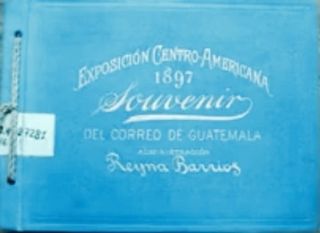 W
WThe Exposición Centroamericana was and industrial and cultural exposition that took place in Guatemala in 1897 and which was approved on 8 March 1894 by the National Assembly by Decree 253 by a suggestion made by president general José María Reina Barrios, at a time when both coffee – only Guatemalan export at the time- and silver international prices were at an all-time high. Its main goal was to showcase the Interoceanic railroad between Iztapa on the Pacific coast and Puerto Barrios on the Atlantic, a project that was well ahead by January 1897, but that was left unfinished when Guatemala went into a deep crisis due to both coffee and silver international prices plummeting after the government had built numerous public buildings and palaces in Guatemala City, simultaneously with the railroad projects. As a result, the Expo failed dramatically, the Guatemalan economic crisis gave rise to several rebellions -mainly the ones in the Highlands and the one on the Eastern Side and president Reina Barrios was eventually assassinated on 8 February 1898.
 W
WThe Federal Republic of Central America, also called the United Provinces of Central America in its first year of creation, is a defunct sovereign state in Central America that consisted of the territories of the former Captaincy General of Guatemala of New Spain. It existed from 1823 to 1841, as a republican democracy.
 W
WThe First Central American Civil War was a civil political and military conflict within the Federal Republic of Central America which lasted from 1826 until 1829. The civil war was fought between Liberal and Conservative lines with Francisco Morazán leading the Liberals and Manuel José Arce, a former Liberal, leading the Conservatives.
 W
WThe Franja Transversal del Norte is a region in Guatemala delimited on the north by an imaginary line between Vértice de Santiago in Huehuetenango and Modesto Méndez Port in Izabal and in the south by La Mesilla in Huehuetenango and Izabal lake. It is composed, from west to east, of part of the Guatemalan departments of Huehuetenango, Quiché, Alta Verapaz and the entire department of Izabal. It extends roughly 15750 km2. During the Guatemalan Civil War, most of the massacres took place there due to the oil, mineral and precious wood reserves in the region. In the 21st century, there are projects to work in the region and a modern highway was built in 2010.
 W
WGabino or Gavino Gaínza y Fernández de Medrano was a Spanish military officer and politician in Spain's American colonies. During the Latin American wars of independence, he initially fought on the royalist side, in Chile. Later, in Guatemala, he supported independence and became the first president of a united Central America extending from Soconusco through Guatemala, El Salvador, Honduras, Nicaragua and Costa Rica.
 W
WThe Guatemalan Revolution was the period in Guatemalan history between the popular uprising that overthrew dictator Jorge Ubico in 1944 and the United States-orchestrated coup d'état in 1954 that overthrew the democratically elected President Jacobo Árbenz. This period has also been called the Ten Years of Spring, highlighting the only years of representative democracy in Guatemala from 1930 until the end of the civil war in 1996, which saw the implementation of a program of social, political, and especially agrarian reform that was enormously influential across Latin America.
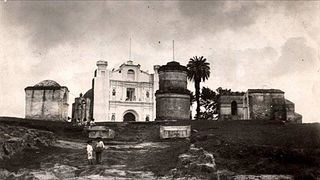 W
WHuman settlement on the present site of Guatemala City began with the Maya who built a city at Kaminaljuyu. The Spanish colonists established a small town, which was made a capital city in 1775. At this period the Central Square with the Cathedral and Royal Palace were constructed. After Central American independence from Spain the city became the capital of the United Provinces of Central America in 1821.
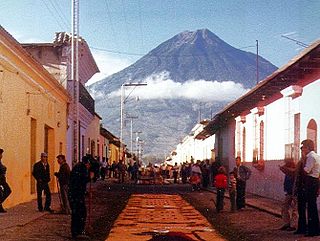 W
WHoly Week in Guatemala is celebrated with street expressions of faith, called processions, usually organized by a "hermandad". Each procession of Holy Week has processional floats and steps, which are often religious images of the Passion of Christ, or Marian images, although there are exceptions, like the allegorical steps of saints.
 W
WThe Lakandon Chʼol were a former Chʼol-speaking Maya people inhabiting the Lacandon Jungle in what is now Chiapas in Mexico and the bordering regions of northwestern Guatemala, along the tributaries of the upper Usumacinta River and the foothills of the Sierra de los Cuchumatanes.
 W
WA Caudillo is part of the larger Iberian tradition of authoritarian leaders, with roots in the Iberian past, particularly in the Reconquista. A number of military leaders who were part of the Spanish American struggle for independence took on political roles in during the establishment of new sovereign nation-states. The establishment of military strong men as the head of new national governments did not generally come via elections, but many did have strong popular support. Caudillos often have a personalist connection with their popular followers, combining charisma and machismo ("manliness"), access to political and economic power. They often desire to legitimize their rule. Many caudillos brought order to their areas of control, but also resorted to violence with their armed supporters to achieve it. The early nineteenth century has been considered the "Age of Caudillos," but authoritarian regimes existed in the twentieth century as well, with caudillismo casting a long shadow.
 W
WLos Altos was the sixth state of the Federal Republic of Central America, and a short-lived independent republic. Its capital was Quetzaltenango. Los Altos occupied eight departments in the west of present-day Guatemala as well as the Soconusco region in the Mexican state of Chiapas.
 W
WThe Maya Bridge at Yaxchilan was a suspension bridge believed by academics to have been built by the Maya across the Usumacinta River, Chiapas, Mexico. If so, it would have been the longest bridge discovered in the ancient world, dating from its construction by the Maya civilization in the late 7th century at Yaxchilan. It was a suspension bridge with a more or less level deck.
 W
WThe Maya civilization was a Mesoamerican civilization developed by the Maya peoples, and noted for its logosyllabic script—the most sophisticated and highly developed writing system in pre-Columbian Americas—as well as for its art, architecture, mathematics, calendar, and astronomical system. The Maya civilization developed in an area that encompasses southeastern Mexico, all of Guatemala and Belize, and the western portions of Honduras and El Salvador. This region consists of the northern lowlands encompassing the Yucatán Peninsula, and the highlands of the Sierra Madre, running from the Mexican state of Chiapas, across southern Guatemala and onwards into El Salvador, and the southern lowlands of the Pacific littoral plain. The overarching term "Maya" is a modern collective term that refers to the peoples of the region, however, the term was not used by the indigenous populations themselves since there never was a common sense of identity or political unity among the distinct populations. Today, the Maya peoples number well over 6 million people, speaking over twenty-eight surviving Mayan languages and residing in nearly the same area as their ancestors.
 W
WMesoamerica is a historical region and cultural area in North America. It extends from approximately central Mexico through Belize, Guatemala, El Salvador, Honduras, Nicaragua, and northern Costa Rica. Within this region pre-Columbian societies flourished for more than 1000 years before the Spanish colonization of the Americas. Mesoamerica was the site of two of the most profound historical transformations in world history: primary urban generation, and the formation of New World cultures out of the long encounters among Indigenous, European, African and Asian cultures.
 W
WNuevo Cartago y Costa Rica was a province of the Kingdom of Guatemala, created in 1540 during the reign of Charles V, Holy Roman Emperor. It was formed from two earlier Spanish territories. The first of these was Royal Veragua, the territories on the Caribbean coast that had been part of Columbian Veragua before the creation of the Duchy of Veragua in 1537 for Admiral Luis Colón y Toledo, namely present-day Nicaragua, Costa Rica and part of Panama. The second was the Pacific coast that had constituted Castilla de Oro, namely from the Gulf of Nicoya on the west to the borders of the Duchy of Veragua.
 W
WThe Plan de Sánchez massacre took place in the Guatemalan village of Plan de Sánchez, Baja Verapaz department, on 18 July 1982. Over 250 people were abused and murdered by members of the armed forces and their paramilitary allies.
 W
WThe Río Negro massacres were a series of killings of villagers by the government of Guatemala between 1980 and 1982.
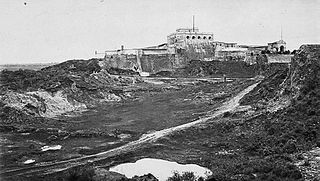 W
WSan José Castle -also known as Castillo de San José in Spanish- was opened to the public on 25 May 1846 on the «Buena Vista Hill» on the southeast of Guatemala City by general Rafael Carrera government; it was also known as «Carrera Castle». San José Fort was located where later Guatemalan administrations built a new city Hall, a National Theater and part of the Bolivar Avenue. The fort had a shooting range for the soldiers, ammunition warehouses, horses, diners and a small pond that was called "Soldier's Pond".
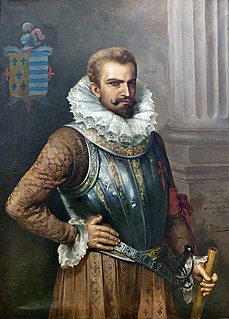 W
WThe Spanish conquest of Guatemala was a protracted conflict during the Spanish colonization of the Americas, in which Spanish colonisers gradually incorporated the territory that became the modern country of Guatemala into the colonial Viceroyalty of New Spain. Before the conquest, this territory contained a number of competing Mesoamerican kingdoms, the majority of which were Maya. Many conquistadors viewed the Maya as "infidels" who needed to be forcefully converted and pacified, disregarding the achievements of their civilization. The first contact between the Maya and European explorers came in the early 16th century when a Spanish ship sailing from Panama to Santo Domingo was wrecked on the east coast of the Yucatán Peninsula in 1511. Several Spanish expeditions followed in 1517 and 1519, making landfall on various parts of the Yucatán coast. The Spanish conquest of the Maya was a prolonged affair; the Maya kingdoms resisted integration into the Spanish Empire with such tenacity that their defeat took almost two centuries.
 W
WThe Tragic Week of 1920 was a civil uprising that took place in Guatemala in the week of April 8 to April 14, 1920, led by Unionist Party leaders, student leaders and those who opposed President Manuel Estrada Cabrera when the latter refused to leave office after the National Assembly declared him mentally incompetent for the presidency and named Carlos Herrera as interim president.
 W
WThe United Fruit Company, now Chiquita Brands International, was an American corporation that traded in tropical fruit grown on Latin American plantations and sold in the United States and Europe. The company was formed in 1899, from the merger of Minor C. Keith's banana-trading concerns with Andrew W. Preston's Boston Fruit Company. It flourished in the early and mid-20th century, and it came to control vast territories and transportation networks in Central America, the Caribbean coast of Colombia, Ecuador, and the West Indies. Though it competed with the Standard Fruit Company for dominance in the international banana trade, it maintained a virtual monopoly in certain regions, some of which came to be called banana republics, such as Costa Rica, Honduras, and Guatemala.